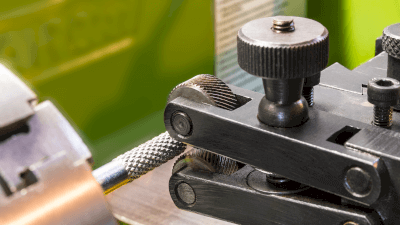What Is Knurling?

Knurling is a manufacturing process where a knurling tool is pressed against a metal surface to create fine bumps, enhancing grip. This technique is derived from the French word “roulette,” meaning “something small and turning,” and is utilized across various industries, including automotive, aircraft, and medical equipment, to prevent slippage.
There are two primary knurling methods: cutting, which removes the surface of the material, and rolling, where material is deformed by pressure without removing material.
Uses of Knurling
Knurling adds surface texture to cylindrical objects such as rods, screw heads, and handles to improve grip and prevent them from slipping. It is applicable to metals like brass, iron, stainless steel, and aluminum, providing flat or angular surface patterns.
- Knurl Cutting: Suitable for processing insert nuts, knob screws, and similar components.
- Knurl Forming: Ideal for machining insert nuts and collars for thermal press fitting.
Knurled products find applications in a wide range of domains, from machinery to everyday items like automobiles, aircraft, home appliances, and mobile phones.
Principle of Knurling
Knurling can be performed either by cutting or rolling:
1. Cutting
This method involves pressing a knurling tool against the material to remove it, forming a pattern. It generates chips but places less load on the machine, allowing for higher quality machining. The process does not deform the material, resulting in a smaller diameter post-processing.
2. Forming
Forming applies pressure while rotating the knurling tool, causing plastic deformation and pattern formation on the material without producing chips. This method increases the diameter of the material from its original size.
Types of Knurling
Knurling is primarily used to enhance grip, producing two main types of patterns:
1. Flat Pattern
Produces straight, linear patterns effective for preventing rotational slippage.
2. Twill Pattern
Creates diamond-shaped patterns, providing anti-slip properties in both circumferential and axial directions.
How to Choose Knurling
Each knurling type has its advantages and disadvantages:
1. Cutting
Suitable for machining thin, long materials without causing bulging, this method minimizes machine and material load, allowing continuous cutting. It’s applicable to various materials, including resin. However, machining materials with steps can be challenging due to tool interference, and tool wear requires careful management during mass production.
2. Rolling
Capable of machining up to the edge of stepped materials and increasing post-machining diameter. While this method can reduce machining time and costs, it is unsuitable for long workpieces due to high resistance and material limitations.
Structure of Knurling
Suitable materials for knurling include aluminum, copper, titanium, brass, resin, cast iron, and various steels. While cutting is versatile, processing hard or brittle materials such as titanium and cast iron or certain resins can be challenging.